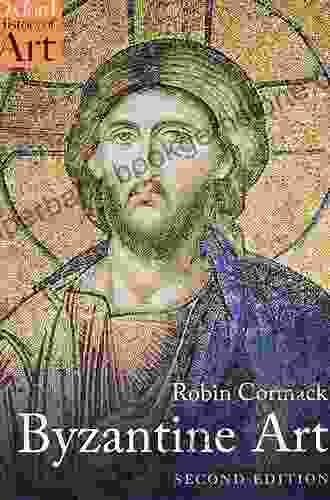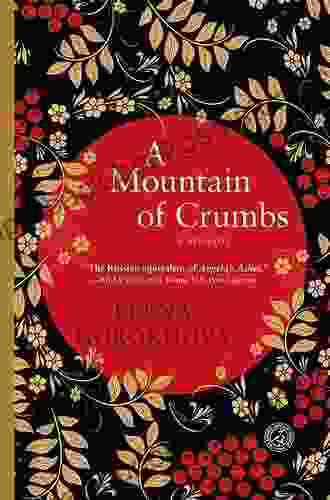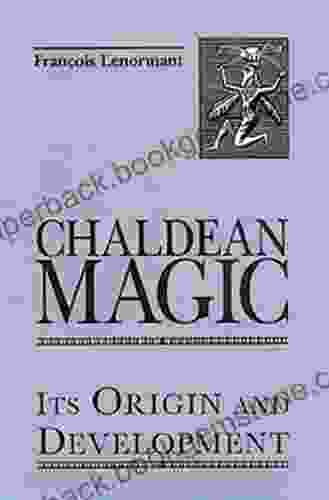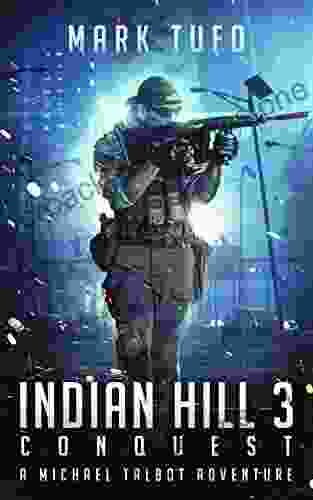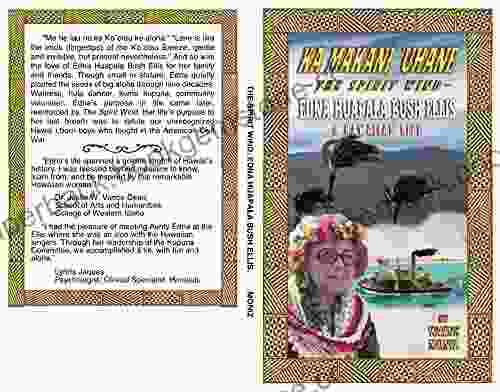Byzantine Art: A Journey through the Oxford History of Art

Byzantine art, a captivating fusion of Eastern and Western influences, stands as a testament to the enduring legacy of the Byzantine Empire (330-1453 AD). Spanning centuries and geographical boundaries, this artistic tradition left an indelible mark on the world, influencing and inspiring countless artists and movements throughout history.
The Oxford History of Art, renowned for its scholarly rigor and comprehensive coverage, offers an in-depth exploration of Byzantine art. Through its meticulously researched volumes, we embark on a journey through the empire's vibrant artistic heritage, unraveling its unique characteristics, historical significance, and lasting impact.
4.6 out of 5
| Language | : | English |
| File size | : | 101816 KB |
| Text-to-Speech | : | Enabled |
| Screen Reader | : | Supported |
| Enhanced typesetting | : | Enabled |
| Print length | : | 263 pages |
| Lending | : | Enabled |
Defining Features of Byzantine Art
Byzantine art, characterized by its distinct visual language, is immediately recognizable for its:
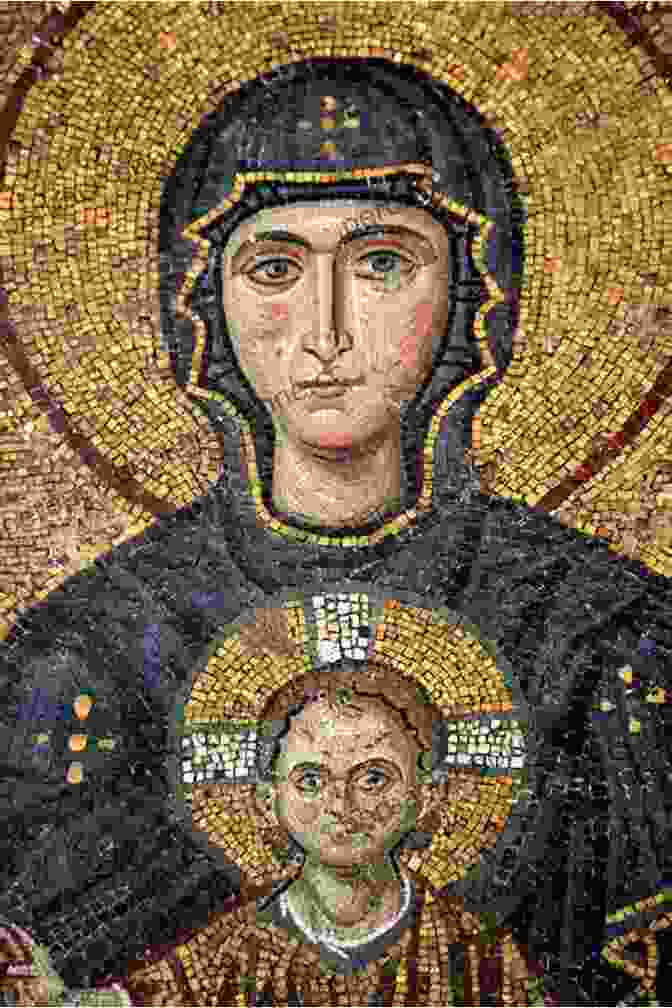
1. Religious Symbolism and Iconography
Central to Byzantine art was its profound religious purpose. The empire's art served as a visual manifestation of Christian theology and depicted biblical narratives, saints, and symbols with profound symbolism. Byzantine artists excelled in capturing the spiritual essence of their subjects through stylized and expressive imagery.
2. Flat, Two-Dimensional Perspective
![]()
Byzantine artists employed a flat, two-dimensional perspective, creating a sense of timelessness and otherworldly detachment. Figures appear as if suspended in space, their faces often depicted with a distinctive elongated and ethereal quality. This unique aesthetic emphasized the spiritual rather than the physical realm.
3. Rich Color and Golden Backgrounds
![]()
Byzantine art reveled in vibrant colors, particularly gold. Golden backgrounds, representing divine light, were a common feature in mosaics, frescoes, and icons. These resplendent hues enhanced the sense of transcendence and awe associated with religious imagery.
Historical Context and Evolution
The development of Byzantine art was closely intertwined with the rise and fall of the Byzantine Empire. Three distinct periods are generally recognized:
1. Early Byzantine Period (330-726 AD)
This period witnessed the transition from Roman to Byzantine art, marked by the construction of monumental churches and the emergence of distinctive iconography. The use of mosaics as a primary decorative medium became widespread.
2. Middle Byzantine Period (726-1204 AD)
During this phase, Byzantine art reached its peak. The empire experienced political stability and artistic flourishing, which resulted in the creation of some of the most significant Byzantine works, including the magnificent Hagia Sophia in Constantinople.
3. Late Byzantine Period (1204-1453 AD)
Following the sacking of Constantinople in 1204, Byzantine art entered a period of decline. However, its influence continued to permeate other artistic traditions, particularly in Western Europe. The empire's final centuries saw a shift towards smaller-scale works, such as portable icons and illuminated manuscripts.
Legacy and Influence
Byzantine art had a profound and lasting impact on subsequent artistic movements, including:
1. Western Medieval Art
Byzantine aesthetics heavily influenced the development of Romanesque and Gothic art in Western Europe. Byzantine motifs, iconography, and techniques were widely adopted by Western artists.
2. Islamic Art
Byzantine art played a significant role in the formation of Islamic art. The use of domes, mosaics, and intricate decorative patterns found in Islamic architecture and ceramics can be traced back to Byzantine influences.
3. Renaissance Art
During the Renaissance, a renewed interest in classical art led to a revival of Byzantine elements in Western painting and architecture. Artists such as Giotto and Duccio drew inspiration from Byzantine techniques and iconography.
Byzantine art stands as a testament to the cultural and artistic achievements of the Byzantine Empire. Its unique visual language, religious symbolism, and enduring legacy continue to captivate and inspire artists and art enthusiasts alike. Through the comprehensive exploration offered by the Oxford History of Art, we gain an unparalleled understanding of this extraordinary artistic tradition and its profound influence on the world stage.
Whether contemplating the ethereal mosaics of Ravenna or marveling at the architectural grandeur of the Hagia Sophia, Byzantine art continues to enthrall and inspire, inviting us on a journey into the depths of history and the enduring beauty of human creativity.
4.6 out of 5
| Language | : | English |
| File size | : | 101816 KB |
| Text-to-Speech | : | Enabled |
| Screen Reader | : | Supported |
| Enhanced typesetting | : | Enabled |
| Print length | : | 263 pages |
| Lending | : | Enabled |
Do you want to contribute by writing guest posts on this blog?
Please contact us and send us a resume of previous articles that you have written.
 Best Book
Best Book Page Flip
Page Flip Bookshelf
Bookshelf Literary loom
Literary loom Chapter
Chapter Bookish
Bookish PageTurner
PageTurner Bibliophile
Bibliophile Story
Story Inkwell
Inkwell Bookworm
Bookworm Labyrinth
Labyrinth Plot Twist
Plot Twist Prose
Prose Paperback
Paperback Storyteller
Storyteller Sanctuary
Sanctuary Fiction
Fiction Reading
Reading Chronicle
Chronicle Read
Read Yiyun Li
Yiyun Li Barry Moser
Barry Moser Linda Nochlin
Linda Nochlin Terry Pratchett
Terry Pratchett Bette Howland
Bette Howland Umm Zakiyyah
Umm Zakiyyah Chris Roel
Chris Roel John Muir
John Muir Ebony Diamonds
Ebony Diamonds Gerri Leen
Gerri Leen Blake Farha
Blake Farha Bob Leszczak
Bob Leszczak Elena Gorokhova
Elena Gorokhova Sarah Birnbach
Sarah Birnbach Tony Horwitz
Tony Horwitz Bolu Babalola
Bolu Babalola Laurie Gough
Laurie Gough Dave Hickey
Dave Hickey Norman Lee
Norman Lee Jpinsiders
Jpinsiders Ibl Press
Ibl Press Jessica Marting
Jessica Marting Marty Noble
Marty Noble Bob Dennard
Bob Dennard Maggie Ramsay
Maggie Ramsay Rohan M Vider
Rohan M Vider Matthew Morgante
Matthew Morgante Steve Ryfle
Steve Ryfle Laura Ling
Laura Ling Hillary Jordan
Hillary Jordan Ernst Rettelbusch
Ernst Rettelbusch Katja Petrowskaja
Katja Petrowskaja Christopher Butler
Christopher Butler Tom Sito
Tom Sito Barry Lord
Barry Lord Lucinda Fleeson
Lucinda Fleeson Lucy Adlington
Lucy Adlington Terry Lee Stone
Terry Lee Stone Bernth Lindfors
Bernth Lindfors Rosemary Kimani
Rosemary Kimani Rita Benn
Rita Benn Darrel Rees
Darrel Rees Susan Herrmann Loomis
Susan Herrmann Loomis Vanessa Zoltan
Vanessa Zoltan Michael Mammay
Michael Mammay Sophia Rolle
Sophia Rolle Saul Tanpepper
Saul Tanpepper Laney Salisbury
Laney Salisbury Paul Kendall
Paul Kendall Briana Wiles
Briana Wiles Jennifer Wilson
Jennifer Wilson Steven Campbell
Steven Campbell S L Rowland
S L Rowland Individual Way
Individual Way Beatrice Sonders
Beatrice Sonders Robin Cormack
Robin Cormack Brandon Varnell
Brandon Varnell Ben Shahn
Ben Shahn Charlotte Fiell
Charlotte Fiell Fania E Davis
Fania E Davis Jamie Carter
Jamie Carter Iris Murdoch
Iris Murdoch Jonathan C Slaght
Jonathan C Slaght Barbara Raue
Barbara Raue Michael Shaara
Michael Shaara Blair Howard
Blair Howard Lucee Joie
Lucee Joie Barbara Chase Riboud
Barbara Chase Riboud Ian J Malone
Ian J Malone Becky Stephen
Becky Stephen Elisabeth Elliot
Elisabeth Elliot Thomas P Stafford
Thomas P Stafford Stephen C Baldwin
Stephen C Baldwin Dean A Kowalski
Dean A Kowalski D A Miller
D A Miller Barry Kirwan
Barry Kirwan Jane Pek
Jane Pek John Scarne
John Scarne Barbara Davis
Barbara Davis Mateo Askaripour
Mateo Askaripour Katie Dowe
Katie Dowe Tessa Miller
Tessa Miller Nelson Demille
Nelson Demille Tim Stokes
Tim Stokes Elisabeth Stevens
Elisabeth Stevens Barbara Delinsky
Barbara Delinsky Wassily Kandinsky
Wassily Kandinsky Bill Bensley
Bill Bensley Jane L Rosen
Jane L Rosen Bob Elliott
Bob Elliott Matthew Brehm
Matthew Brehm Momoyo Nishimura
Momoyo Nishimura Eddie Chambers
Eddie Chambers Michael Wise
Michael Wise Phoebe Robinson
Phoebe Robinson Lauren Meisner
Lauren Meisner Jules Verne
Jules Verne Tom Wilson
Tom Wilson Mackenzie Phillips
Mackenzie Phillips Leon Smith
Leon Smith Barbara Lewis
Barbara Lewis Michael Anderle
Michael Anderle Hildegarde Mahoney
Hildegarde Mahoney James Joyce
James Joyce Jenny Mckay
Jenny Mckay Rebecca Sugar
Rebecca Sugar Shirtaloon
Shirtaloon Ian Mcdonald
Ian Mcdonald Collins Dictionaries
Collins Dictionaries Loring M Danforth
Loring M Danforth Linda Lael Miller
Linda Lael Miller Jonathan Strahan
Jonathan Strahan Betty Dooley Awbrey
Betty Dooley Awbrey Elissa Washuta
Elissa Washuta B V Larson
B V Larson Kenya Hunt
Kenya Hunt Joan Reardon
Joan Reardon Mike Curato
Mike Curato Josephine B Pasquarello
Josephine B Pasquarello Charles A Perrone
Charles A Perrone Merl Code
Merl Code Diane Duane
Diane Duane Billie Holiday
Billie Holiday Jacinda Townsend
Jacinda Townsend C Pierce Salguero
C Pierce Salguero Ella Frances Sanders
Ella Frances Sanders Catherine Ryan Hyde
Catherine Ryan Hyde Bob Dow
Bob Dow Bob Drury
Bob Drury Suzette Riddick
Suzette Riddick Joanne Hutchinson
Joanne Hutchinson Peter Inglis
Peter Inglis Ben Box
Ben Box Steve Huston
Steve Huston Orestes Lorenzo
Orestes Lorenzo Nikki Turner
Nikki Turner Jeremy Dronfield
Jeremy Dronfield Bac Hoai Tran
Bac Hoai Tran Basilius Besler
Basilius Besler Eva Tulene Watt
Eva Tulene Watt C J Boyle
C J Boyle Beryl Markham
Beryl Markham Bethany C Morrow
Bethany C Morrow Robert Roskind
Robert Roskind Michael Doyle
Michael Doyle Sandra Duran Wilson
Sandra Duran Wilson Terry Compton
Terry Compton Tya Marie
Tya Marie Dennis E Taylor
Dennis E Taylor Seymour Morris Jr
Seymour Morris Jr Charlise Lyles
Charlise Lyles Ken Browar
Ken Browar Bassey Ikpi
Bassey Ikpi Samuel Peralta
Samuel Peralta Mitche Graf
Mitche Graf Milind Mulick
Milind Mulick Malala Yousafzai
Malala Yousafzai Fiona Peart
Fiona Peart Benjamin Lewin
Benjamin Lewin Becky Gilhespie
Becky Gilhespie Donald N Thompson
Donald N Thompson Deanne Stillman
Deanne Stillman Robert Henderson
Robert Henderson Brad Lee
Brad Lee Barbara Bradley
Barbara Bradley Edward Gibbon
Edward Gibbon Kao Kalia Yang
Kao Kalia Yang Jennifer Sewing
Jennifer Sewing Harvey Arden
Harvey Arden Dan Dietz
Dan Dietz Billie Rae Bates
Billie Rae Bates David E Lowe
David E Lowe Benjamin Drake
Benjamin Drake Roman Mars
Roman Mars Bayard Taylor
Bayard Taylor Gavin Maxwell
Gavin Maxwell John Howard Griffin
John Howard Griffin Robert E Hampson
Robert E Hampson Gary Wasserman
Gary Wasserman Sara Boccaccini Meadows
Sara Boccaccini Meadows Nolan Clark
Nolan Clark Ulysses S Grant
Ulysses S Grant Kerry Bogert
Kerry Bogert Michael Winter
Michael Winter Mary Brave Bird
Mary Brave Bird Paraluman S Aspillera
Paraluman S Aspillera Philip Ball
Philip Ball Sophie Cunningham
Sophie Cunningham Rainer Maria Rilke
Rainer Maria Rilke Joseph Heywood
Joseph Heywood Lisa Congdon
Lisa Congdon Margaret Kessler
Margaret Kessler Ea Hooper
Ea Hooper Stuart D Paine
Stuart D Paine Barbara Grizzuti Harrison
Barbara Grizzuti Harrison John Ruskin
John Ruskin Silvia Marina Arrom
Silvia Marina Arrom Maxime J Durand
Maxime J Durand Maura Spiegel
Maura Spiegel Bebe Harper
Bebe Harper Ilan Stavans
Ilan Stavans Bich Minh Nguyen
Bich Minh Nguyen John G Breslin
John G Breslin Barney Nelson
Barney Nelson Toni Ann Johnson
Toni Ann Johnson Michael Chatfield
Michael Chatfield Peter Ustinov
Peter Ustinov Barry Herniman
Barry Herniman Tiana Bighorse
Tiana Bighorse Simon Turney
Simon Turney Thomas S Hischak
Thomas S Hischak Zongyan Hu
Zongyan Hu Tim Rangnow
Tim Rangnow Beau Riffenburgh
Beau Riffenburgh Bev Sellars
Bev Sellars Robert Muirhead
Robert Muirhead Bobby Brown
Bobby Brown Bill Plympton
Bill Plympton Brent Eviston
Brent Eviston Barbara Totaro
Barbara Totaro Beverly Jenkins
Beverly Jenkins Hakeem M Oluseyi
Hakeem M Oluseyi Stuart Williams
Stuart Williams Greg O Brien
Greg O Brien Glynn Stewart
Glynn Stewart Maurice Samuels
Maurice Samuels Wendy Tait
Wendy Tait Grace Berry
Grace Berry Sarah Hepola
Sarah Hepola Richard Sorger
Richard Sorger Tony Burton
Tony Burton Beth Tondreau
Beth Tondreau Benj Pasek
Benj Pasek Deirdre Slattery
Deirdre Slattery Ben J Harris
Ben J Harris Jack Finney
Jack Finney Ceidrik Heward
Ceidrik Heward Barrington Barber
Barrington Barber Terese Marie Mailhot
Terese Marie Mailhot Laurent Bolard
Laurent Bolard Russell Foureagles
Russell Foureagles Douglas Brooke Wheelton Sladen
Douglas Brooke Wheelton Sladen Sheila Montilla
Sheila Montilla Bob Martin
Bob Martin Khadijah J
Khadijah J Kathy Mckeon
Kathy Mckeon Marie Beardmore
Marie Beardmore John Mulholland
John Mulholland George Lopez
George Lopez Ben D Over
Ben D Over Dana Fox
Dana Fox Eric Gibson
Eric Gibson Pam Flowers
Pam Flowers Mario Rizzi
Mario Rizzi Ruth Silvestre
Ruth Silvestre Emily Spivack
Emily Spivack Lori Wilde
Lori Wilde Patrick Symmes
Patrick Symmes Benjamin Hochman
Benjamin Hochman Barbara Hambly
Barbara Hambly Brad Bussie
Brad Bussie Bengie Molina
Bengie Molina Kristen Dutkiewicz
Kristen Dutkiewicz Ashley Jaquavis
Ashley Jaquavis Staci Swider
Staci Swider Bandana Ojha
Bandana Ojha Birgit O Connor
Birgit O Connor Hayao Miyazaki
Hayao Miyazaki Barbara Casey
Barbara Casey Esmeralda Santiago
Esmeralda Santiago Justin Woolley
Justin Woolley Helen Thorpe
Helen Thorpe Jason Sperb
Jason Sperb Gabrielle Euvino
Gabrielle Euvino Ben Eastham
Ben Eastham Lucy Jane Bledsoe
Lucy Jane Bledsoe Elaine A Clark
Elaine A Clark Benjamin John Coleman
Benjamin John Coleman Wayne Moniz
Wayne Moniz Bernice L Mcfadden
Bernice L Mcfadden Jordan Marie
Jordan Marie Barry Sonnenfeld
Barry Sonnenfeld Yoshitaka Amano
Yoshitaka Amano Benjamin E Wise
Benjamin E Wise Dalili
Dalili Interweave Editors
Interweave Editors Theo Farrington
Theo Farrington Debbie Rose Myers
Debbie Rose Myers Ros Per
Ros Per Tammy Ruggles
Tammy Ruggles Lena Corwin
Lena Corwin Bella Blair
Bella Blair Talia Hibbert
Talia Hibbert Lorraine De Meaux
Lorraine De Meaux Tori Rodriguez
Tori Rodriguez Stewart M Green
Stewart M Green Philip B Meggs
Philip B Meggs Ian Chilvers
Ian Chilvers George H Gisser
George H Gisser Wesley Jones
Wesley Jones Ellen Tomaszewski
Ellen Tomaszewski Ravyn Wilde
Ravyn Wilde Yvonne Blackwood
Yvonne Blackwood Bill Winner
Bill Winner Jodi Staniunas Hopper
Jodi Staniunas Hopper Lynne Olson
Lynne Olson Ruby Dixon
Ruby Dixon Mark Tufo
Mark Tufo Betty Halbreich
Betty Halbreich Michael J Hayde
Michael J Hayde Robert Lanz
Robert Lanz Veda Austin
Veda Austin Taylor Jenkins Reid
Taylor Jenkins Reid Dori Jones Yang
Dori Jones Yang John Seed
John Seed Dean Koontz
Dean Koontz Jonathan Lopez
Jonathan Lopez Tim Powers
Tim Powers James S A Corey
James S A Corey Tim Rayborn
Tim Rayborn D L Harrison
D L Harrison Stephanie Claytor
Stephanie Claytor Diane Tuckman
Diane Tuckman Beverly J Armento
Beverly J Armento Sir Richard Francis Burton
Sir Richard Francis Burton Keith Houston
Keith Houston Mary Peters
Mary Peters Bill Lee
Bill Lee Stephen Boss
Stephen Boss Joseph M Henninger
Joseph M Henninger Kevin Hart
Kevin Hart Dan Moren
Dan Moren Saxon Andrew
Saxon Andrew Bill Bryson
Bill Bryson Monica Walters
Monica Walters Zora O Neill
Zora O Neill John H Vanderpoel
John H Vanderpoel Tom Wiener
Tom Wiener Harmon Cooper
Harmon Cooper Erica Davies
Erica Davies Ben Coes
Ben Coes Joseph Doddridge
Joseph Doddridge Florencia E Mallon
Florencia E Mallon Matthew Luzi
Matthew Luzi Jennie Smallenbroek
Jennie Smallenbroek Poppy Evans
Poppy Evans Mark Crilley
Mark Crilley Noel Riley Fitch
Noel Riley Fitch Jonathan Waterman
Jonathan Waterman Bil Donovan
Bil Donovan Barbie Scott
Barbie Scott Mariana Atencio
Mariana Atencio Olive Yong
Olive Yong Bill Arnott
Bill Arnott Carol Huber Cypher
Carol Huber Cypher Robert Morkot
Robert Morkot Tracey Lange
Tracey Lange Jan V White
Jan V White Kolbie Blume
Kolbie Blume Louis Wain
Louis Wain David Fisher
David Fisher James Haddock
James Haddock Theda Perdue
Theda Perdue Shanora Williams
Shanora Williams Gabrielle Hamilton
Gabrielle Hamilton Steve Berry
Steve Berry Bella Martin
Bella Martin Marvin Patchen
Marvin Patchen Rexford Govorchin
Rexford Govorchin Joan Williams
Joan Williams Daniel Rachel
Daniel Rachel Ian Nathan
Ian Nathan Bob Herbert
Bob Herbert Deborah Forman
Deborah Forman Colin Falconer
Colin Falconer Eric Henze
Eric Henze Bill Cotter
Bill Cotter David V Jervis
David V Jervis Hope Hart
Hope Hart Blaise Corvin
Blaise Corvin William Lidwell
William Lidwell George Schindler
George Schindler Basil Johnston
Basil Johnston Mary Lou Andre
Mary Lou Andre Jay Armstrong
Jay Armstrong Baoshu
Baoshu Helmut Kopka
Helmut Kopka Chris Nashawaty
Chris Nashawaty Larissa Pham
Larissa Pham William Alexander
William Alexander Shane Mitchell
Shane Mitchell Ruth Superhal
Ruth Superhal Laura Furman
Laura Furman Richard L Leza Sr
Richard L Leza Sr Marina Warner
Marina Warner Nick Petrie
Nick Petrie Phillip Maisel
Phillip Maisel Matthew J Milliner
Matthew J Milliner Ben Corbett
Ben Corbett Bj Wane
Bj Wane Betsy Dillard Stroud
Betsy Dillard Stroud Eliot Greenspan
Eliot Greenspan Tiana Laveen
Tiana Laveen Clifford D Simak
Clifford D Simak David Airey
David Airey Jessie Knadler
Jessie Knadler Brad Taylor
Brad Taylor Bianca Del Rio
Bianca Del Rio James Goddard
James Goddard Edward White
Edward White William Black
William Black Koloman Moser
Koloman Moser Beebe Bahrami
Beebe Bahrami Wilkie Collins
Wilkie Collins Bernice Lerner
Bernice Lerner Bonnie Barker
Bonnie Barker Tershia Lambrechts
Tershia Lambrechts Helen Hoang
Helen Hoang Nefertiti Austin
Nefertiti Austin Bruce Hanington
Bruce Hanington Gillian Gloyer
Gillian Gloyer Chad Zunker
Chad Zunker Greg Mitchell
Greg Mitchell Jon Contino
Jon Contino Leo Buijs
Leo Buijs Bella Young
Bella Young Faye Kellerman
Faye Kellerman Ben Strand
Ben Strand Conn Iggulden
Conn Iggulden Barack Obama
Barack Obama Barbara A Parish
Barbara A Parish Diane Gensler
Diane Gensler Micah Ian Wright
Micah Ian Wright Lynne Anne Blom
Lynne Anne Blom Eric Rauchway
Eric Rauchway Betsy Whyte
Betsy Whyte Stanislaw Lem
Stanislaw Lem James Grady
James Grady William A Kappele
William A Kappele Jenna Fischer
Jenna Fischer Joseph Lanza
Joseph Lanza Patricia Sands
Patricia Sands Michael Haag
Michael Haag Yahrah St John
Yahrah St John Chevonne Clarke Bryan
Chevonne Clarke Bryan Sarah Mirk
Sarah Mirk Ottessa Moshfegh
Ottessa Moshfegh Nancy Kress
Nancy Kress Nathalie Kalbach
Nathalie Kalbach Lexi Sundell
Lexi Sundell Wayne Larsen
Wayne Larsen Paul S Leland
Paul S Leland Claude Lanzmann
Claude Lanzmann Jamie Davis
Jamie Davis Spencer Shaw
Spencer Shaw Dave Hill
Dave Hill Philip Guston
Philip Guston David Elliot Cohen
David Elliot Cohen J P Telotte
J P Telotte J C Sum
J C Sum Lonely Planet
Lonely Planet Bley Hack
Bley Hack Shing Schih
Shing Schih Robert Crais
Robert Crais Becky Chambers
Becky Chambers Kyle Froman
Kyle Froman Denis Dutton
Denis Dutton Tyler Perry
Tyler Perry Bonny Pierce Lhotka
Bonny Pierce Lhotka James Ulyatt
James Ulyatt Sergio Toppi
Sergio Toppi Noret Flood
Noret Flood Cornelius C Kubler
Cornelius C Kubler Boris Mihailovic
Boris Mihailovic Carol Sulcoski
Carol Sulcoski Brian Burke
Brian Burke Mary Matsuda Gruenewald
Mary Matsuda Gruenewald Kayla Arora
Kayla Arora Betsy Prioleau
Betsy Prioleau Behrouz Boochani
Behrouz Boochani Keith Doyle
Keith Doyle Betsy Beier
Betsy Beier Baby Professor
Baby Professor Marie Killilea
Marie Killilea Doug Risner
Doug Risner Tove Ditlevsen
Tove Ditlevsen J Dominique
J Dominique Bill H Myers
Bill H Myers Barbara Miller
Barbara Miller Stephen Haff
Stephen Haff Blakely Little
Blakely Little William Ellis
William Ellis Partha Mitter
Partha Mitter Maggie Craft
Maggie Craft F Scott Fitzgerald
F Scott Fitzgerald Bart King
Bart King Bob Normand
Bob Normand Stephen Mills
Stephen Mills Ben Hannam
Ben Hannam Bet Borgeson
Bet Borgeson Bonny Snowdon
Bonny Snowdon John E Siers
John E Siers Hal Erickson
Hal Erickson Lesley Downer
Lesley Downer Barbara Demick
Barbara Demick Paula Kamen
Paula Kamen Tim W Jackson
Tim W Jackson Shoko Tendo
Shoko Tendo Ben Street
Ben Street Matt Smith
Matt Smith Alan O Brien
Alan O Brien Zachary Leader
Zachary Leader Charles Sturt
Charles Sturt David Byrne
David Byrne Sejal Shah
Sejal Shah Lowell Angell
Lowell Angell Charlie Jane Anders
Charlie Jane Anders Leanne Kitchen
Leanne Kitchen Valerie L Winslow
Valerie L Winslow Melissa Rivers
Melissa Rivers
Light bulbAdvertise smarter! Our strategic ad space ensures maximum exposure. Reserve your spot today!
 Edward ReedFollow ·16.7k
Edward ReedFollow ·16.7k Cruz SimmonsFollow ·9.1k
Cruz SimmonsFollow ·9.1k Glenn HayesFollow ·4.9k
Glenn HayesFollow ·4.9k Terry BellFollow ·8.3k
Terry BellFollow ·8.3k Elias MitchellFollow ·8.3k
Elias MitchellFollow ·8.3k Federico García LorcaFollow ·5.3k
Federico García LorcaFollow ·5.3k Carlos FuentesFollow ·7.1k
Carlos FuentesFollow ·7.1k Cristian CoxFollow ·16k
Cristian CoxFollow ·16k
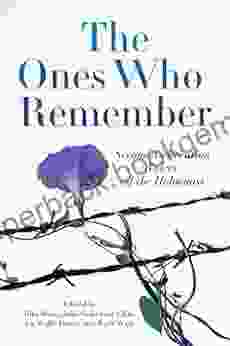
 Bryan Gray
Bryan GrayThe Second Generation: Voices of the Holocaust
The Holocaust was one of the most horrific...

 Douglas Foster
Douglas FosterWalking the Fields of the Newfoundland Dead
In the heart of the rolling countryside of...
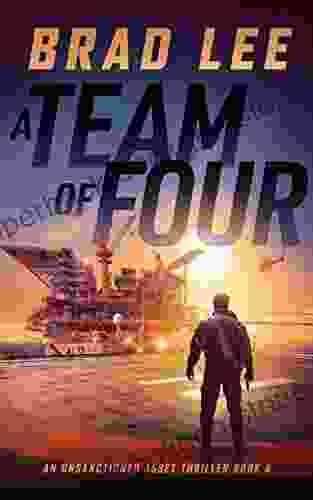
 Henry James
Henry JamesThe Unsanctioned Asset: A Gripping Thriller Set in a...
In the realm of espionage thrillers, The...

 Devon Mitchell
Devon MitchellPainting En Plein Air: Capturing the Essence of Nature on...
Painting en plein air, or painting...

 Damon Hayes
Damon HayesThe Life and Times of Dene Residential School Survivor
Residential schools...
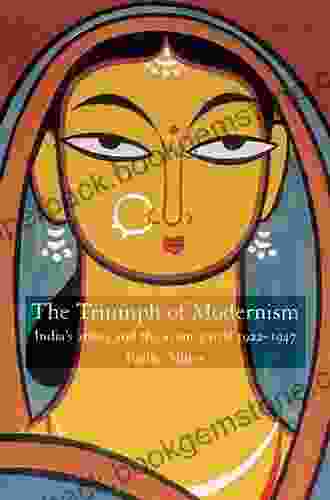
 Steve Carter
Steve CarterIndia Artists and the Avant Garde: 1922-1947
The term "avant-garde" is...
4.6 out of 5
| Language | : | English |
| File size | : | 101816 KB |
| Text-to-Speech | : | Enabled |
| Screen Reader | : | Supported |
| Enhanced typesetting | : | Enabled |
| Print length | : | 263 pages |
| Lending | : | Enabled |


